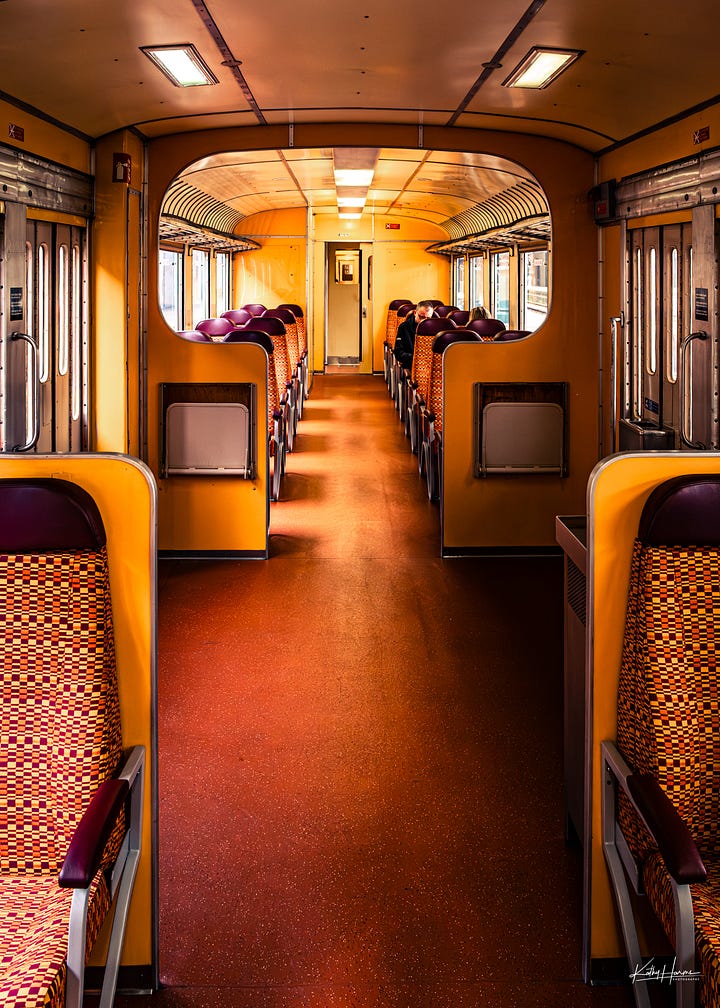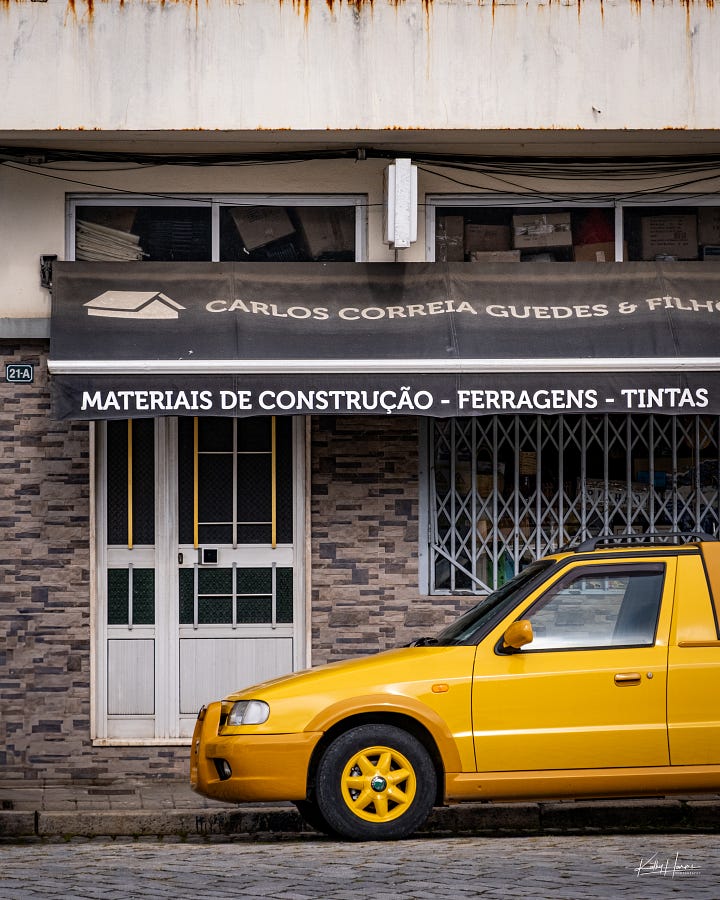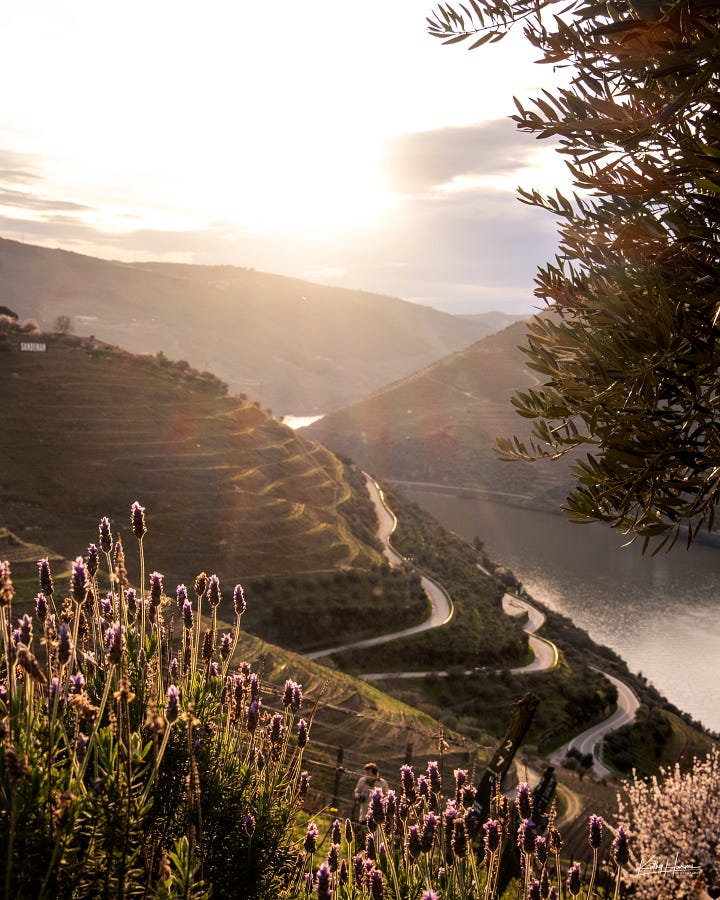Could You Move from North America to Europe–Part 4
Could you move far away from family and friends?
Welcome to “The Journey”, a newsletter from my little corner of the internet!
Every two weeks, I share stories and reflections from everyday life—sometimes small moments, sometimes bigger lessons. You’ll also get a behind-the-scenes look at my latest projects, along with interesting insights into my photography and writing. Think of it as a mix of personal discoveries, creative updates, and things worth sharing.
In this issue, I’m continuing to discuss the topic of “could you move from North America to Europe”, first raised a few months ago in a thought-provoking post by Gregory Garretson.
“The Journey” is a reader-supported publication and arrives in your inbox every second Sunday for free! And if you wish, you can opt in for a paid subscription ($5CAD/month or $50CAD/year), and you will receive a surprise item in the mail as a “thank you”!
Life at Large (This section has been temporarily commandeered to discuss the query “could you move from North America to Europe?”)
“Could you move far away from family and friends?”
It’s a question we got a lot as we were preparing to move from New Westminster, British Columbia, to Porto, Portugal in 2023.
Our cheeky answer? “We live in Canada, we ALREADY live far away from family and friends.”
And honestly, that wasn’t wrong. Even though my parents and brother lived in the same province, visiting them meant either an eight-hour drive or a wildly overpriced flight that only got me “near” their town–followed by another hour of driving and a ferry ride.
Canada is huge. Long distances are just a part of life. But still, we thought a lot about how we would maintain our relationships after we moved.
In a way, the pandemic was an unexpected training ground for staying in touch with people we couldn’t see in person. Like many others, we found outselves in a world of Zoom calls, Facetime chats, virtual game nights, and long-overdue catch-ups with people we rarely saw in person.
At first it was novel. Then, exhausting. Then just… normal.
In fact, the weekly Zoom sessions we set up with my family carried on beyond the travel restrictions of the pandemic and have continued uninterrupted for almost 5 years now. When we moved to Portugal, nothing changed–except the background on our screen.
So, do we actually see my family less?
Since moving, we have been back to Canada twice, with a third trip in the works. Each visit has lasted three weeks or more, which is actually more quality time than we had when we lived closer.
Before, visits were short and scattered– a long weekend here, a few days there. Now, with visits that last a few weeks or more, we get past the usual “So how’s work?’ pleasantries and actually have time for deeper conversations.
Still, the distance is on my mind. Because I can no longer just hop in the car and grind out three mountain passes over eight hours, in the event my parents need me, I have set aside dedicated funds for last-minute flights. The separate funds are more for my peace of mind than anything else, but it’s comforting to me to know I have the means to get back quickly if needed.
There were trade-offs to consider with our move.
For Michal, moving brought him geographically closer to his family. After 28 years of living on a different continent, he’s now closer to them, and sees them more often–just for shorter visits. Regular phone calls and messages keep our connections strong in between visits.
Ultimately, moving is about balance and trade-offs. Everyone’s priorities will be different.
Before we left, people often followed up their “How can you move so far?” question with:
“Well, I could never move away from my [adult children, parents, grandkids, best friends]. They are my life.”
And that’s completely valid. If staying geographically close to family is a non-negotiable for you, then moving far away might not be the right choice.
Some people move, love their new life, but later decide they miss their grandkids too much–so they relocate again to be closer. Other’s plan how to stay connected, plan ways to be together at times, and find peace in the arrangement.
Both choices are right. But the real question is, what’s right for you?
Are you overestimating how hard it will really be?
If you are dreaming of a big move but hesitating because you are worried about losing touch with your loved ones, here’s something to consider:
We tend to overestimate how intensely and how long negative emotions will affect us.
In the context of moving, you might imagine:
Feeling lonely.
Constant homesickness and regret.
Struggling to make new friends.
Drifting apart from family and close friends.
While these are understandable fears, they are also amplified by something called impact bias–our brain’s tendency to overestimate the intensity and duration of emotional reactions to future events, particularly negative ones. People often believe a distressing event, like moving away from family, will affect them more severely and for a longer time than it actually does. This causes them to underestimate their ability to adapt and recover.
Funny enough, impact bias works both ways–it also makes us believe positive events will bring more happiness, for longer, than they really will.
Basically, impact bias is a bit of a jerk.
Planning in advance helps.
So let’s say you recognize that impact bias is making you anxious about loosing touch with loved ones. What can you do?
Michal and I made a plan before moving:
We confirmed how different friends preferred to stay in touch (for example, some don’t use social media, so we set up email or Whatsapp connections with them).
We agreed to regular Zoom or Facetime calls with family and others.
I keep a reminder in my calendar to check in with people I don’t talk to as often. Every few months, I send a quick email to keep in touch.
Recently, I came across this article that has several creative ways to stay in touch with people “across the miles”, as we used to say:
Here is an excerpt from the article:
“In my opinion, it's the little things that count. Try having your friend's location saved on your weather and world clock app! This gives you some connection to their everyday life, you can see if they’re having a sunny day or a rainy day, which you can relate to them about by sending them a “hope you have a lovely sunny day” text. How special.” ~ Alexcea Apostolakis
I love this idea. In fact, I already check my parents’ weather daily–though, let’s be real, someone in my family will comment on the weather in our family chat within 10 minutes of waking up anyway. We’re just wired that way.
Moving away doesn’t have to mean losing connection—it just means shifting how you stay connected. And sometimes, those shifts actually improve relationships instead of weakening them.
So if fear of distance is holding you back, take a step back and ask yourself:
Is this really a dealbreaker, or is impact bias just messing with me?
If it’s the latter, there’s a good chance it will be easier than you think!
If you enjoyed this section, and you want to read more like it, you can use these links to navigate through the 10-part series:
Previous post | Next post | Start at the beginning
Or, you can carry on for odds & ends about my creative endeavours, up to you!
Projects and Events
Over the last few months I have been thinking about ways to trim down my social media footprint, and be more intentional with my website. Over time my footprint on the old interwebs had gotten a little out of hand. I had a grand total of five Instagram pages (now trimmed down to two), and three Facebook pages (now trimmed back to a basic profile page). I have opened a BlueSky account. The platform is similar to Twitter X, and if I’m honest, I never mastered THAT platform, so I’m uncertain how I’ll do on BlueSky. I guess we will see.
Before Christmas, I spent time building a website, but failed to develop a clear vision and strategy around what I wanted the website to do for me.
I decided to enlist some professional help.
Before I set of for Lofoten a few weeks ago, I started with a free “homepage copy review” by the talented and razor sharp Sarah of
. Well, not from her Substack (which you should follow), from her actual business, which you can check out here.We went through my homepage, section by section, and discussed ways to improve it. Talking with Sarah was enlightening, and gave me a sense of possibility.
Now I just have to make the changes. That part is scary. I’m not confident with the “backend” business of a website, but I obviously need to learn. Updating my homepage is on my “to do” list for this coming week. Once I have reworked it as far as I can with my limited skills, I’ll be going back to Sarah to enlist her skills to take it to the next level.
The other big item on my “to do” list is to FINISH MY MOM’S STORY! If it feels like I’ve been “finishing” it forever, that’s because I have been!
I under-estimated the complexity of the last two years of the timeline in the story. There are a lot of new events and stories to tell, and themes to wrap up. I’ll say more about that in the writing section below…
Writing
I’m so relieved that we are sharing mom’s story as a serial. I will definitely do the same when we start writing dad’s story. Writing and sharing the story chapter by chapter, and letting each chapter “rest” for a while on Substack, allows new memories to be added in as they come. We are working with memories from more than 50 years ago on these current chapters, it takes some time for them to emerge, and the smaller details to come into focus. The serial approach leaves more time for the story to unfold before it needs to be a “finished manuscript”.
Sometimes, although Mom has already reviewed each chapter a few times by the time we publish it, when she reads it again on Substack, paired with any pertinent photos, it prompts more memories.
If we had tried to work this into one big manuscript, and published it as a complete story, I think we would have missed many of the rich memories that have come up throughout the process. Instead, I have pages of notes of additional details, memories, and events that I will go back and add into earlier chapters once the whole story is out.
Occasionally mom mentions the name of a person that I haven’t heard of before. She tells a story where they play an important role and it seems like they MUST have been in the picture already, but there was no mention of them, so it’s like they just fell out of the sky. With a bit of digging, Mom can often recall where they first met, how their friendship evolved and led to the “big” story where she first mentioned them. It’s a process, sort of like a gentle investigation, but when I can go back and introduce them earlier in the story, it makes the event where they have a larger role more natural and interesting.
Through this process I have learned a lot about my mom that I didn’t know before. I also have appreciated being able to work on a project with her. We have rarely worked on anything together, not since I was a kid, and certainly nothing of this scale. That alone is worth the price of admission, as they say! I’m looking forward to starting a similar process with my dad. I’m very grateful that both my parents are open to these projects.
Photography
It’s been a good month for photography so far.
Imagine spending a day in the beautiful Douro Valley—sipping wine, enjoying great food, and hanging out with fellow photographers. Sounds like a dream, right? Now picture your hosts cracking open a Pelican case full of Fujifilm cameras and lenses, inviting you to try them all out. Heaven.
Well, that’s exactly what happened last weekend! Michal and I joined a small group of photographers on a Fujifilm.pt day trip into the Douro Valley, and the vision I just painted for you was pretty much how the day went.
We met the group at São Bento Station at 9:00 AM, where we boarded a “heritage” train (pictured in the first image below). Our hosts were local Fujifilm photographers João, Nuno, and Mário. During the 2.5-hour ride, we enjoyed the views of the Douro river and talked about photography, until João cracked open a case of Fujifilm gear! It wasn’t QUITE feeding time in the shark tank-we had already indicated what gear we would like to try, so it wasn’t a free for all.
Since Michal and I already use the X-series system, we were most keen to test out some new lenses. I chose the Fujinon XF 18-135mm, while Michal opted for the XF 55-200mm.
We arrived in Pinhão, and had some time to walk through the small village (second image in the set below) before setting out on a boat cruise. Both activities provided a good opportunities to put the lenses through their paces in different conditions. Afterward, we gathered for an amazing three-course lunch in a local restaurant. We had a chance to learn more about the others in the group, and of course, talk more about photography! After lunch, it was off to one of the quintas (vineyards) for a tour, a wine tasting, and beautiful views of the valley in the late-afternoon sun (last two photos in the set below).
Throughout the day, I shot dozens of photos, many I wouldn’t normally take, just to see how the lens performed. I wanted to know if I would actually use the full range of the lens, or if I kept gravitating toward certain focal lengths that are in my comfort zone.
This had been on my mind ever since our Norway trip, where I carried a 10-24mm, 16-55mm, 50-140mm, and 100-400mm lens everywhere, everyday. That setup covered 10mm-400mm, which sounds great in theory, but in practice? The 50-140mm and 100-400mm are heavy lenses, and they drain batteries fast. That would be fine if I used them often—but I don’t.
I used to rely on the 50-140mm for portraits, but now I have a 35mm f/1.4 and a 50mm f/1.0, so the heavy 50-140mm rarely makes it off the shelf. As for the 100-400mm, Michal and I originally each bought one for bird photography, but we’ve only been out once since moving to Porto. Even on Lofoten, I barely used either lens. Instead, I kept swapping lenses—often in bad weather—which isn’t great for the camera sensor, settling on 35-80mm focal range, even for the more distant landscapes. I didn’t want to diminish the vastness of the vistas by zooming in too much.
The experience last weekend confirmed what we’d already been suspecting: our photography needs and preferences are shifting. We’re realizing that we could probably share a single 100-400mm lens instead of each carrying one. And if we picked up one of the lenses we tested on the weekend(my vote would be for the 18-135mm lens I tested), we could finally retire the heavy 50-140mm.
It’s funny how gear preferences evolve over time. This experience gave us the push we needed to rethink our setup—and maybe lighten our camera bags for future adventures.
Here are a few of the images I took to test the Fujinon XF 18-135mm lens:




Last Thoughts
Thank you for following along as I share odds and ends from life and creative pursuits, and to those of you who opted in for a paid subscription, THANK YOU! There is a small token of my gratitude on its way to you in the mail for new paid subscribers.
There is also a little “bonus” at the end of this newsletter for paid subscribers, this week it’s a short video about breakfast. Yep, breakfast!
As always, I love hearing from you - your comments, questions, suggestions, or just a quick hello, they are all very welcome!
Até à próxima! (Until next time!)
Kathy
Keep reading with a 7-day free trial
Subscribe to The Journey to keep reading this post and get 7 days of free access to the full post archives.




